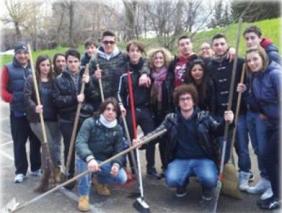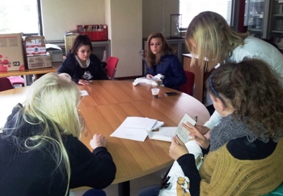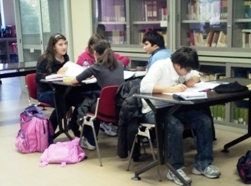Organizational structure
Organizational structure and operational procedures
The Peer Tutoring project was developed with a clear organizational structure:
• a project team, responsible for defining the general methodological and organizational plan;
• groups of tutor students (5-6) for each first and second class (14 gencin 16), each coordinated by a teacher, involved both in organizing and in experimenting operating paths;
• active involvement of the Headmaster and his staff for support to implementation, development and dissemination of the project
Hizmet operating procedures can be summed up as follows:
• training meetings of teachers who are willing to become senior tutor teachers (before the end of 13-14) in which you should spread the main concepts of guidance teaching by finding the right way to do so (making simplifications by ppt presentations, preparing simple booklets, making movies…)
• training meetings of junior tutor students within the end of school year 13-14 (best)/at the beginning of s.y. 14-15 (in this case it is necessary to go around before the end of 13-14, collect adhesions and mail addresses of children and call them at the end of August, before school starts, to train them (for training simply follow the junior guidelines, with simple and operational indications such as does and donts)
• division . junior tutors into groups of two to six children, assigning each group to a first class, with the coordination of one student and one senior tutor a group for the activities taking place during the morning (go to first classes during students’ assemblies or during the break, help them solve their problems, observe if there are any bullies in the class (if so try and find strategies to control their behavior and report the senior tutor) help shy students to socialize, etc.)
• gathering availability of students willing to do study support activities in the afternoon (for individuals or small groups, at school or at their homes if school is too far or closed): go in the first/second classes (but this activity is also good for all the classes) and find children who are competent in one specific subject; invite them to make a lesson for small groups of students who have problems in that subject: they are often better than teachers to explain their peers!
- (optional) gather availability of children to make voluntary activities with local associations. If the school has a network of connections/wants to make a network with local associations. The procedure is the following: make contacts with a local association, collect students’ (over 16) adhesion, organize a timetable for this activity (ex: we have students who go to the local poor cookhouse and serve at tables/who go to the association who helps children with speech or writing deficiencies/who go to the local hospital in the pediatric department to entertain ill children, etc.)
• make customer satisfaction questionnaires to get feedback on the positivity of the actions implemented
• make and maintain a blog on the school site (lnx.casagrande-cesi.it – “Tutor’s Blog”) for the circulation of information and visibility of the project.
- Organize meetings with local stakeholders (line committees)
- Disseminate at local, national and international level by means of newspapers, videos, multimedia, personal contacts










